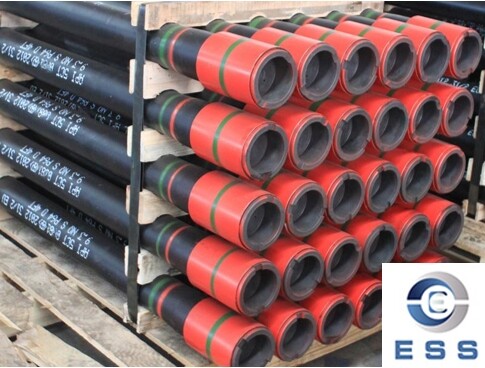
The Minimum Length of Welded Pipe Pup Joints
According to general industry standards and
engineering practices, the minimum length of welded pipe pup joints is usually required to be no less than 2 times the diameter of the pipe,
generally between 100 and 150 mm, to ensure the firmness of welding and the
overall performance of the pipeline system.
Importance of welded pipe pup joints
In pipeline systems, welded steel
pipe pup joints play a vital role and are a type of OCTG pipe. They
are used to connect different pipe sections to ensure smooth transmission of
fluids. The length of the pup joints directly affects the quality of welding
and the overall performance of the pipeline system. Too short a pup joint may
result in weak welding, increase the risk of leakage and breakage, while too
long a pup joint may cause material waste and installation difficulties.
Determination of the minimum length
requirements for pup joints
According to general industry standards and
years of engineering practices, the minimum length of welded pipe pup joints is
usually required to be no less than 2 times the diameter of the pipe. This is
because, during the welding process, a sufficient pup joint length can ensure
the integrity and strength of the weld and avoid problems such as stress
concentration or cracks at the welded joint. Generally speaking, for common
pipe diameters, the minimum length of the pup joint is usually between 100 and 150
mm.
Considerations for choosing the
appropriate length
When choosing the length of a welded pipe
pup joint, in addition to meeting the minimum length requirement, the following
factors need to be considered:
1. Pressure and temperature of the pipeline
system: Under high temperature and high pressure environments, longer pup
joints are required to ensure the firmness and safety of welding.
2. Type and thickness of materials:
Different types of materials and thicknesses have different requirements for
welding, so it is necessary to select the appropriate pup joint length
according to the actual situation.
3. Convenience of installation and
maintenance: A pup joint that is too long may cause difficulties in
installation and maintenance, so it is necessary to consider both operability
and economy comprehensively.
The impact of pup joint length on
welding quality and pipeline performance
The appropriate pup joint length is crucial
to ensure welding quality and pipeline performance. A pup joint that is too
short may result in insufficient strength of the welded joint, which is prone
to problems such as leakage and fracture. A pup joint that is too long may
increase material costs and installation difficulties. Therefore, when choosing
the pup joint length, various factors need to be considered comprehensively to
achieve the best engineering effect.
Summary
In summary, the minimum length requirement
for welded pipe pup joints is determined according to industry standards and
engineering practices to ensure the firmness of welding and the overall
performance of the pipeline system. When selecting the length of the pup joint,
multiple factors need to be considered comprehensively to achieve the best
economic benefits and safety performance.













 Eastern Steel Manufacturing Co.,Ltd not only improve product production and sales services, but also provide additional value-added services. As long as you need, we can complete your specific needs together.
Eastern Steel Manufacturing Co.,Ltd not only improve product production and sales services, but also provide additional value-added services. As long as you need, we can complete your specific needs together.










